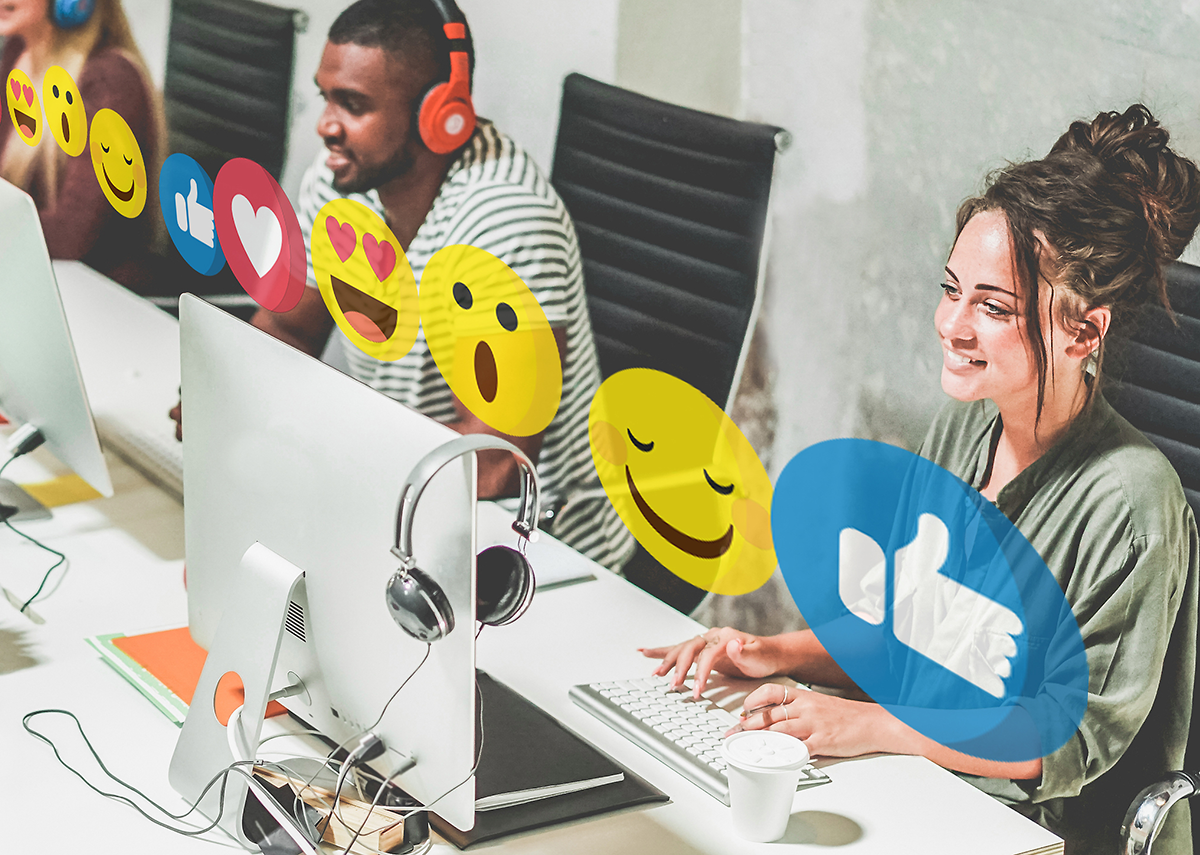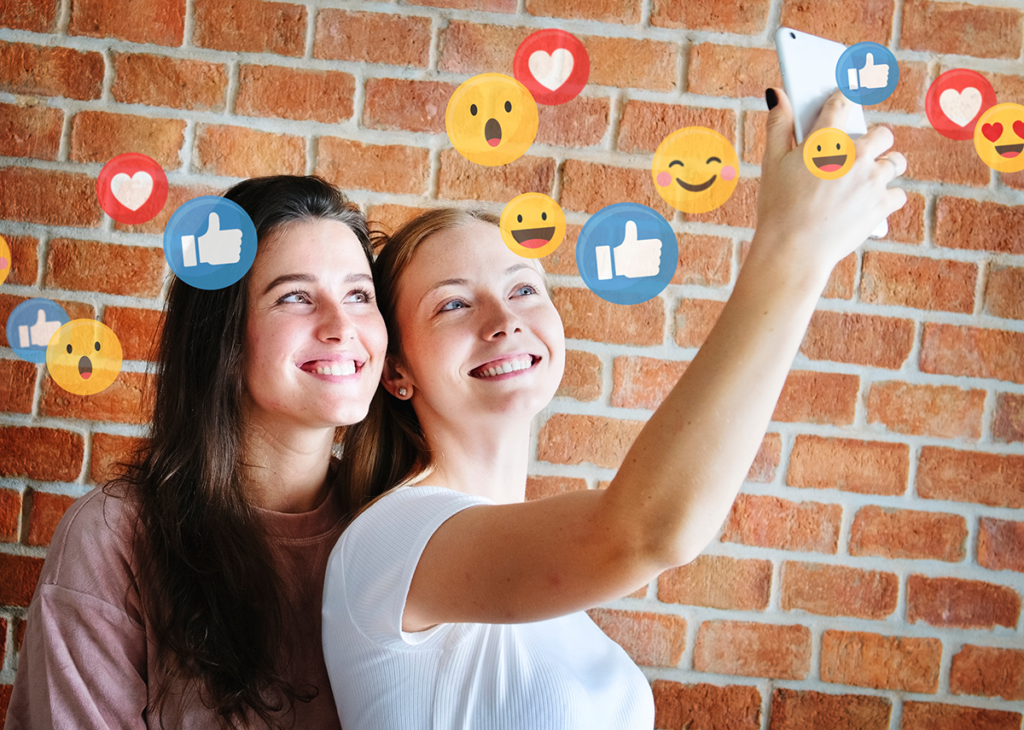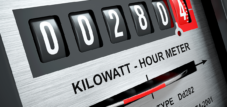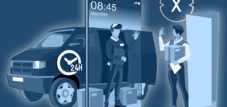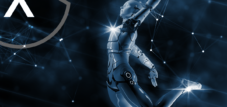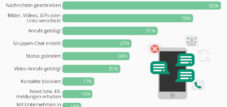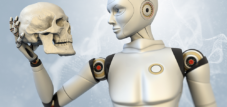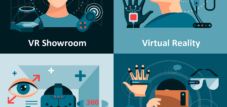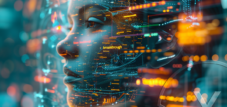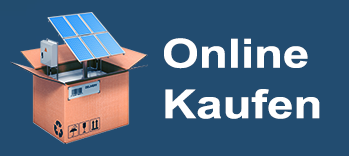Xpert tips, explanation, meaning and top ten emojis – everything you should know about the world of emoticons now
Language selection 📢
Published on: July 30, 2023 / Update from: August 9, 2023 - Author: Konrad Wolfenstein
An emoji overview
⌚️ 📱 📲 💻 ⌨ 💽 💾 💿 📀 📼 📷 📹 🎥 📞 ☎️ 📟 📠 📺 📻 ⏰ ⏳ ⌛️ 📡 🔋 🔌 💡 🔦 💸 💵 💴 💶 💷 💰 💳 💎 🔧 🔨🔩🔪 ⚔ 🚬 ⚰ ⚱ 🔮 💈 🔭 🔬 💊 💉 🔖 🚽 🚿 🛁 🔑 🚪🗿🎈 🎏 🎀 🎁 🎊 🎉 🎎 🎐 🎌 🏮 ✉️ 📩 📨 📧 💌 📮 📪 📫 📬 📭 📦 📯 📥 📤 📜 📃 📑 📊 📈 📉 📄 📅 📆 📇 📋 📁 📂 📰 📓 📕 📗 📘 📙 📔 📒 📚 📖 🔗 📎 ✂️ 📐 📏 📌 📍 🚩 🔐 🔒 🔓 🔏 ✒️ 📝 ✏️ 🔍 🔎 💬 💭🗣
😀 😬 😁 😂 😃 😄 😅 😆 😇 😉 😊 😋 😌 😍 😘 😗 😙 😚 😜 😝 😛 😎 😏 😶 😐 😑 😒 😳 😞 😟 😠 😡 😔 😕 😣 😖 😫 😩 😤 😮 😱 😨 😰 😯 😦 😧 😢 😥 😪 😓 😭 😵 😲 😷 😴 💤 💩 😈 👿 👹 👺 💀 👻 👽 😺 😸 😹 😻 😼 😽 🙀 😿 😾 🙌 👏 👋 👍 👊 ✊ ✌️ 👌 ✋ 💪 🙏 ☝️ 👆 👇 👈 👉 🖖 💅 👄 👅 👂 👃 👀 👤 👶 👦 👧 👨 👩 👱 👴 👵 👲 👳 👮 👷 💂 🎅 👼 👸 👰 🚶 🏃 💃 👯 👫 👬 👭 🙇 💁 🙅 🙆 🙋 🙎 🙍 💇 💆 💑 👩❤️👩 👨❤️👨 💏 👩❤️💋👩 👨❤️💋👨 👪 👨👩👧 👨👩👧👦 👨👩👦👦 👨👩👧👧 👩👩👦 👩👩👧 👩👩👧👦 👩👩👦👦 👩👩👧👧 👨👨👦 👨👨👧 👨👨👧👦 👨👨👦👦 👨👨👧👧 👚 👕 👖 👔 👗 👙 👘 💄 💋 👣 👠 👡 👢 👞 👟 👒 🎩 🎓 👑 🎒 👝 👛 👜 💼 👓 💍 🌂
👦🏻 👧🏻 👨🏻 👩🏻 👴🏻 👵🏻 👶🏻 👱🏻 👮🏻 👲🏻 👳🏻 👷🏻 👸🏻 💂🏻 🎅🏻 👼🏻 💆🏻 💇🏻 👰🏻 🙍🏻 🙎🏻 🙅🏻 🙆🏻 💁🏻 🙋🏻 🙇🏻 🙌🏻 🙏🏻 🚶🏻 🏃🏻 💃🏻 💪🏻 👈🏻 👉🏻 ☝️🏻 👆🏻👇🏻 ✌️🏻 🖖🏻 ✊🏻 ✋🏻 👊🏻 👌🏻 👍🏻 👎🏻 👋🏻 👏🏻 👐🏻 💅🏻 👂🏻 👃🏻 🚣🏻 🛀🏻 🏄🏻 🏇🏻 🏊🏻 🚴🏻 🚵🏻
👦🏼 👧🏼 👨🏼 👩🏼 👴🏼 👵🏼 👶🏼 👱🏼 👮🏼 👲🏼 👳🏼 👷🏼 👸🏼 💂🏼 🎅🏼 👼🏼 💆🏼 💇🏼 👰🏼 🙍🏼 🙎🏼 🙅🏼 🙆🏼 💁🏼 🙋🏼 🙇🏼 🙌🏼 🙏🏼 🚶🏼 🏃🏼 💃🏼 💪🏼 👈🏼 👉🏼 ☝️🏼 👆🏼👇🏼 ✌️🏼 🖖🏼 ✊🏼 ✋🏼 👊🏼 👌🏼 👍🏼 👎🏼 👋🏼 👏🏼 👐🏼 💅🏼 👂🏼 👃🏼 🚣🏼 🛀🏼 🏄🏼 🏇🏼 🏊🏼 🚴🏼 🚵🏼
👦🏽 👧🏽 👨🏽 👩🏽 👴🏽 👵🏽 👶🏽 👱🏽 👮🏽 👲🏽 👳🏽 👷🏽 👸🏽 💂🏽 🎅🏽 👼🏽 💆🏽 💇🏽 👰🏽 🙍🏽 🙎🏽 🙅🏽 🙆🏽 💁🏽 🙋🏽 🙇🏽 🙌🏽 🙏🏽 🚶🏽 🏃🏽 💃🏽 💪🏽 👈🏽 👉🏽 ☝️🏽 👆🏽 👇🏽 ✌️🏽 🖖🏽 ✊🏽 ✋🏽 👊🏽 👌🏽 👍🏽 👎🏽 👋🏽 👏🏽 👐🏽 💅🏽 👂🏽 👃🏽 🚣🏽 🛀🏽 🏄🏽 🏇🏽 🏊🏽 🚴🏽 🚵🏽
👦🏾 👧🏾 👨🏾 👩🏾 👴🏾 👵🏾 👶🏾 👱🏾 👮🏾 👲🏾 👳🏾 👷🏾 👸🏾 💂🏾 🎅🏾 👼🏾 💆🏾 💇🏾 👰🏾 🙍🏾 🙎🏾 🙅🏾 🙆🏾 💁🏾 🙋🏾 🙇🏾 🙌🏾 🙏🏾 🚶🏾 🏃🏾 💃🏾 💪🏾 👈🏾 👉🏾 ☝️🏾 👆🏾👇🏾 ✌️🏾 🖖🏾 ✊🏾 ✋🏾 👊🏾 👌🏾 👍🏾 👎🏾 👋🏾 👏🏾 👐🏾 💅🏾 👂🏾 👃🏾 🚣🏾 🛀🏾 🏄🏾 🏇🏾 🏊🏾 🚴🏾 🚵🏾
👦🏿 👧🏿 👨🏿 👩🏿 👴🏿 👵🏿 👶🏿 👱🏿 👮🏿 👲🏿 👳🏿 👷🏿 👸🏿 💂🏿 🎅🏿 👼🏿 💆🏿 💇🏿 👰🏿 🙍🏿 🙎🏿 🙅🏿 🙆🏿 💁🏿 🙋🏿 🙇🏿 🙌🏿 🙏🏿 🚶🏿 🏃🏿 💃🏿 💪🏿 👈🏿 👉🏿 ☝️🏿👆🏿👇🏿✌️🏿🖖🏿 ✊🏿 ✋🏿 👊🏿 👌🏿 👍🏿 👎🏿 👋🏿 👏🏿 👐🏿 💅🏿 👂🏿 👃🏿 🚣🏿 🛀🏿 🏄🏿 🏇🏿 🏊🏿 🚴🏿 🚵🏿
🐶 🐱 🐭 🐹 🐰 🐻 🐼 🐨 🐯 🐮 🐷 🐽 🐸 🐙 🐵 🙈 🙉 🙊 🐒 🐔 🐧 🐦 🐤 🐣 🐥 🐺 🐗 🐴 🐝 🐛 🐌 🐞 🐜 🐍 🐢 🐠 🐟 🐡 🐬 🐳 🐋 🐊 🐆 🐅 🐃 🐂 🐄 🐪 🐫 🐘 🐐 🐏 🐑 🐎 🐖 🐀 🐁 🐓 🐕 🐩 🐈 🐇 🐾 🐉 🐲 🌵 🎄 🌲 🌳 🌴 🌱 🌿 ☘ 🍀 🎍 🎋 🍃 🍂 🍁 🌾 🌺 🌻 🌹 🌷 🌼 🌸 💐 🍄 🌰 🎃 🐚 🌎 🌍 🌏 🌕 🌖 🌗 🌘 🌑 🌒 🌓 🌔 🌚 🌝 🌛 🌜 🌞 🌙 ⭐️ 🌟 💫 ✨ ☀️ ⛅️ ☁️ ⚡️ 🔥 💥 ❄️ 🔥 💥 ❄️ ⛄️ 💨 ☔️ 💧 💦 🌊
🍏 🍎 🍐 🍊 🍋 🍌 🍉 🍇 🍓 🍈 🍒 🍑 🍍 🍅 🍆 🌽 🍠 🍯 🍞 🍗 🍖 🍤 🍳 🍔 🍟 🍕 🍝 🍜 🍲 🍥 🍣 🍱 🍛 🍙 🍚 🍘 🍢 🍡 🍧 🍨 🍦 🍰 🎂 🍮 🍬 🍭 🍫 🍩 🍪 🍺 🍻 🍷 🍸 🍹 🍶 🍵 ☕️ 🍼 🍴
⚽️ 🏀 🏈 ⚾️ 🎾 🏉 🎱 ⛳️ 🎿 🏂 🎣 🚣 🏊 🏄 🛀 🚴 🚵 🏇 🏆 🎽 🎫 🎭 🎨 🎪 🎤 🎧 🎼 🎹 🎷 🎺 🎸 🎻 🎬 🎮 👾 🎯 🎲 🎰 🎳
🚗 🚕 🚙 🚌 🚎 🚓 🚑 🚒 🚐 🚚 🚛 🚜 🚲 🚨 🚔 🚍 🚘 🚖 🚡 🚠 🚟 🚃 🚋 🚝 🚄 🚅 🚈 🚞 🚂 🚆 🚇 🚊 🚉 🚁 ✈️ ⛵️ 🚤 🚀 💺 ⚓️ 🚧 ⛽️ 🚏 🚦 🚥 🏁 🚢 🎡 🎢 🎠 🌁 🗼 🏭 ⛲️ 🎑 🗻 🌋 🗾 ⛺️ 🌅 🌄 🌇 🌆 🌃 🌉 🌌 🌠 🎇 🎆 🌈 🏰 🏯 🗽 🏠 🏡 🏢 🏬 🏣 🏤 🏥 🏦 🏨 🏪 🏫 🏩 💒 ⛪️
❤️ 💛 💙 💜 💔 💕 💞 💓 💗 💖 💘 💝 💟 🔯 ⛎ ♈️ ♉️ ♊️ ♋️ ♌️ ♍️ ♎ ️ ♏️ ♐️ ♑️ ♒️ ♓️ 🆔 🈳 🈹 📴 📳 🈶 🈚️ 🈸 🈺 🈷️ ✴️ 🆚 🉑 💮 🉐 ㊙ ️ ㊗️ 🈴 🈵 🈲 🅰️ 🅱️ 🆎 🆑 🅾️ 🆘 ⛔️ 📛 🚫 ❌ ⭕️ 💢 ♨️ 🚷 🚯 🚳 🚱 🔞 📵 ❗️ ❕ ❓ ❔ ‼️ ⁉️ 💯 🔅 🔆 🔱 ⚜ 〽️ ⚠️ 🚸 🔰 ♻️ 🈯️ 💹 ❇️ ✳️ ❎ ✅ 💠 🌀 ➿ 🌐 Ⓜ️ 🏧 🈂 ️ 🛂 🛃 🛄 🛅 ♿️ 🚭 🚾 🅿️ 🚰 🚹 🚺 🚼 🚻 🚮 🎦 📶 🈁 🆖 🆗 🆙 🆒 🆕 🆓 🔟 🔢 ▶️ ⏩ ⏪ 🔀 🔁 🔂 ◀️ 🔼 🔽 ⏫ ⏬ ➡️ ⬅️ ⬆️ ⬇️ ↗️ ↘️ ↙️ ↖️ ↕️ ↔️ 🔄 ↪️ ↩️ ⤴️ ⤵️ ℹ️ 🔤 🔡 🔠 🔣 #️⃣ 🎵 🎶 〰️ ➰ ✔️ 🔃 ➕ ➖ ➗ ✖️ 💲 💱 ©️ ®️ ™️ 🔚 🔙 🔛 🔝 🔜 ☑️ 🔘 ⚪️ ⚫️ 🔴 🔵 🔸 🔹 🔶 🔷 🔺 ▪️ ▫️ ⬛️ ⬜️ 🔻 ◼️ ◻️ ◾️ ◽️ 🔲 🔳 🔈 🔉 🔊 🔇 📣 📢 🔔 🔕 🃏 🀄️ ♠️ ♣️ ♥️ ♦️ 🎴 🕐 🕑 🕒 🕓 🕔 🕕 🕖 🕗 🕘 🕙 🕚 🕛 🕜 🕝 🕞 🕟 🕠 🕡 🕢 🕣 🕤 🕥 🕦 🕧
The top ten emojis in the business sector: Effective communication for professionals 🔝💼🚀
In today's business world, in which communication must be quick and efficient, emojis have found their way into the business area and have become an important part of business communication. Here we present the “emojis top ten in the business area”, a selection of the most popular and effective emojis that use professionals in their professional interactions.
1. 📅 Calendar: Time management and appointments are crucial in business. The calendar emoji is often used to announce meetings, events, or deadlines. It helps to focus on important dates and coordinate schedules efficiently.
2. 💼 Briefcase: The briefcase emoji symbolizes professional matters and is often used in emails or chats to indicate important documents, contracts or presentations. He conveys professionalism and seriousness.
3. 🤝 Handshake: Business relationships and collaborations are at the heart of the business world. The handshake emoji is used to emphasize approval, agreements and partnerships. It is a symbol of cooperation and trust.
4. 💡 Idea: Creativity and innovation are invaluable for companies. The idea emoji is often used to share new ideas or innovative approaches, or to highlight creative breakthroughs.
5. 📈 Chart: In the world of business analytics and finance, the chart emoji is an important part. It symbolizes growth, success and progress and is often used to emphasize positive developments or successes.
6. 📊 Bar Chart: Data and statistics play a crucial role in business strategy. The bar chart emoji is used to highlight statistical information or performance metrics. It teaches fact-based decision making.
7. 📧 Email: Email is still one of the most important means of communication in business. The email emoji is often used to indicate important emails or to show that a message has been sent via email.
8. 📞 Telephone: Although communication is becoming increasingly digital, the telephone still plays a crucial role in business life. The telephone emoji is used to mark calls, conference calls or customer conversations.
9. 👏 Thumbs up: Recognition and appreciation are important factors for a motivated workforce. The thumbs up emoji is used to express praise, approval, or support and to encourage team members.
10. 💻 Laptop: In today's digital workplace, the laptop emoji is an indispensable symbol. It stands for office work, remote work and technology and is often used to communicate that you are working on a project or task.
➡️ The “emojis top ten in the business area” offer professionals a wide range of symbols that help them make their communication more effective and more expressive. Through the targeted use of these emojis, business people can transmit their news more precisely, strengthen relationships and promote positive corporate culture. However, it is important to make the use of emojis appropriately and in line with the situation in order to avoid misunderstandings and leave a professional impression.
The International Spread of Emojis: How They Revolutionized the Way We Communicate 💬✨🚀
The emergence of emojis: From i-mode in Japan to the global language of symbols 🌏📱
Emojis originated in Japan and were first introduced in the 1990s. The term “emoji” consists of two Japanese words: “e” (絵), which means the picture or sign, and “moji” (文字), which means characters. Together they mean “signs”.
The Japanese engineer Shigetaka Kurita is considered the creator of the first sentence of emojis. In the late 1990s, Kurita was part of a team at NTT Docomo, a Japanese mobile operator who worked on a mobile internet service called “I-Mode”. During this time the idea was born to create symbols to facilitate communication on mobile devices and to make them more emotional.
The original emojis consisted of simple 12 × 12 pixels and covered a wide range of pictures, including facial expressions, weather, food, animals and much more. On November 1, 1999, the first 176 emojis were introduced with the start of “I-Mode” in Japan. At first they were limited to Japanese mobile phones, but their popularity grew quickly.
As mobile technology and global connectivity became more widespread, emojis eventually spread beyond Japan. Other technology companies and operating system manufacturers recognized their importance for communication and introduced emojis in their platforms.
In 2010, emojis were included in the international standard Unicode, making them easier to use across different platforms and devices. Today, emojis are widely used in virtually all messaging applications and social media and have become an integral part of modern online communication. They enable people to express emotions, convey complex ideas and enrich communication in an increasingly digital and global world.
Emojis in digital culture: Their role in modern online communication 💻📲😄
The use of emojis has become an integral part of modern online communication. These small, colorful icons have taken on a unique role in expressing feelings, reinforcing the meaning of messages, and enriching communication in digital spaces in fun ways. In this text, we take a closer look at the role of emojis in digital culture and how they influence the way we communicate with each other.
Emojis: The universal language of emotions 😄❤️🤔
Emojis have the ability to convey feelings and emotions in a simple and direct way. Whether it's joy, sadness, love or confusion, the variety of emojis available allows people to convey their mood and attitude without phrasing long sentences. Using emojis can reduce misunderstandings and strengthen the emotional connection between the conversation partners. This universal language of emotions transcends linguistic and cultural boundaries and allows people from different countries and backgrounds to communicate with each other without sharing the same native language.
Emojis as an expression of creativity and individuality 🎨🌟🆒
With the growing popularity of emojis, many platforms and applications have started expanding their collection of emojis. These days there are emojis for almost every life situation, activity or object you can imagine. From traditional facial expressions to complex symbols such as avatars, foods, animals and celebrities, the variety is impressive. The ability to select and combine emojis allows people to customize their messages and express their creativity. Emojis have become an important means of expression and serve as a visual language that adds a personal touch to writing.
The evolution of emojis over time 🔄📈🌐
From humble beginnings in the 1990s with just 176 emojis to today, with thousands of emojis available in mainstream Unicode standards, emojis have continued to evolve. Technology companies and application developers are constantly working to expand their emoji collections and improve the way emojis are displayed. With the increasing internationalization of digital communication, emojis have also been culturally adapted to take into account the needs and preferences of different user groups worldwide. The ability to personalize emojis and use a wider variety of symbols has influenced and expanded the way people communicate with each other.
Emojis in marketing and branding 📈📣🏢
Companies and brands have recognized the importance of emojis in online communication and are using them specifically to reinforce their messages and present their brand identity. Emojis are used in social media, email marketing, digital advertising, and other forms of online communication to capture audience attention and foster an emotional connection. Some brands have even created their own custom emojis to represent their brand values and products in a subtle and playful way. Using emojis as part of their marketing strategy shows how these little symbols have become a powerful tool for companies to interact with their target audience and strengthen their online presence.
Challenges and limitations of emojis in communication 🚧🔒🤔
Despite their popularity and effectiveness, emojis also have their limitations and challenges. Sometimes they can be misunderstood or misinterpreted as the meaning of an emoji can vary depending on cultural background or individual perception. In some cases, emojis can also be used inappropriately and cause controversy or conflict. It's important to use emojis appropriately and in the right contexts to avoid misunderstandings and ensure clear communication.
➡️ Emojis have a remarkable impact on modern online communication. They have built a bridge between different languages and cultures, expanded the possibilities of expression and enriched communication. As a visual language tool, emojis remain an integral part of digital culture and are expected to continue to play an important role in shaping our online interactions.
Emoticons and emojis: The fusion of two means of expression in digital communication
Emoticons and emojis are both symbols used in digital communication to express emotions and reactions. However, there are some key differences between the two:
Emoticons
- Definition: Emoticons are strings of ASCII characters arranged to represent facial expressions. They are created by combining letters, numbers and punctuation marks available on the keyboard.
- Origin: Emoticons originated in typewriter culture and were first used in online chat rooms and forums in the 1980s.
- Simplicity: Emoticons are simple and easy to create. A classic example of an emoticon is the smiley 🙂 for a smiling face or 🙁 for a sad face.
Emojis
- Definition: Emojis are pictograms and symbols that are displayed graphically. They are part of the Unicode standard and appear as colored symbols on smartphones and other digital devices.
- Origin: Emojis were developed in Japan in the late 1990s and come from the Japanese words “E” (picture) and “Moji” (sign).
- Diversity: Emojis offer a wider variety of representations, including faces, animals, objects, symbols, and more. They are colorful and more detailed than emoticons.
Similarities between emoticons and emojis
- Emotional expressions: Both emoticons and emojis are used to represent emotions and reactions in digital communication.
- Universal Communication: Both emoticons and emojis are a type of universal language that people around the world use to express their feelings and communicate better.
- Popular Means of Communication: Both emoticons and emojis are widely used on social media, messaging apps, email and other digital communication platforms and are often used in personal messages, posts and comments.
➡️ Emoticons and emojis are both important tools for conveying emotions and reactions in digital communication. While emoticons consist of simple ASCII characters and have been in use since the 1980s, emojis are graphic pictograms developed in Japan in the late 1990s and are part of the Unicode standard. Both have contributed to making digital communication richer and more expressive.
Blurring the lines: The blurred distinction between emoticons and emojis in modern communication
The language of feelings: How emoticons and emojis enrich our digital communication without making distinctions
Nowadays, in everyday communication there is often no strict distinction between emoticons and emojis, and the terms are often used interchangeably. This is because over time the meaning and usage of the two symbols have largely become mixed and their distinguishing features have become less relevant.
Originally, emoticons were created as simple strings of ASCII characters, while emojis are graphic pictograms represented in color and encoded in the Unicode standard. There also used to be a clear divide in terms of origin, as emoticons originated in typewriter culture and early online chat rooms, while emojis originated in Japan and only later found use in global communications.
However, today most digital platforms and messaging apps have integrated emojis into their interface. Users can choose from a variety of emoji symbols and use them in their messages without worrying about whether they were originally designed as an emoticon or emoji.
Because emojis are colorful and more detailed than emoticons, they often offer a wider range of expression, which has made them more popular in modern communication. The use of emoticons consisting exclusively of ASCII characters has become less common in everyday communication.
➡️ The distinction between emoticons and emojis is often neglected in today's communication, as both serve as symbols to express emotions and reactions in digital communication. However, the use of emojis has increased significantly in recent years and has become an integral part of our modern communication.
The top ten emojis in global communication 🥰 🙌😎
1. 😂 Smiling face with tears: This emoji is probably one of the most popular and commonly used emojis worldwide. It expresses strong joy and laughter and is often used to emphasize humor in text messages and social media.
2. ❤️ Red Heart: The heart emoji represents love, affection and connection. It is a classic and is used in various contexts to express feelings of love and friendship.
3. 😍 Beaming Face with Heart Eyes: This emoji shows great admiration or enthusiasm for someone or something. It is often used to express crushes or admiration for aesthetic things.
4. 😊 Smiling Face with Smiling Eyes: A warm and friendly emoji that radiates happiness and contentment. It is often used to show sympathy and goodwill.
5. 🙏 Folded Hands: This emoji symbolizes prayer, gratitude and respect. It is used in various cultural and religious contexts to express appreciation.
6. 😎 Smiley with sunglasses: An emoji that exudes confidence, coolness and calmness. It is often used to show a relaxed and casual attitude.
7. 🙌 Raised Hands: This emoji represents cheering, enthusiasm and celebration. It is often used to mark successes or positive events.
8. 🤣 Face writhing with laughter: Similar to the tears emoji, this emoji expresses strong cheerfulness and laughter. It is often used in humorous conversations.
9. 😢 Crying Face: The emoji expresses sadness and disappointment. It is used to show compassion and concern or to express one's emotions.
10. 🥰 Beaming face with hearts: This emoji represents great affection and love. It is commonly used in relationships and expressions of love.
➡️ This list of top ten emojis is based on their worldwide distribution and common use in various cultural and social contexts. Emojis have become an important means of global communication, allowing people to express emotions and moods in a simple and effective way.

Xpert.Digital – Pioneer Business Development
Xpert.Plus is a project from Xpert.Digital. We have many years of experience in supporting and advising on storage solutions and in warehouse optimization, which we bundle in a large network under Xpert.Plus.
I would be happy to serve as your personal advisor.
You can contact me by filling out the contact form below or simply call me on +49 89 89 674 804 (Munich) .
I'm looking forward to our joint project.
Xpert.Digital – Konrad Wolfenstein
Xpert.Digital is a hub for industry with a focus on digitalization, mechanical engineering, logistics/intralogistics and photovoltaics.
With our 360° business development solution, we support well-known companies from new business to after sales.
Market intelligence, smarketing, marketing automation, content development, PR, mail campaigns, personalized social media and lead nurturing are part of our digital tools.
You can find out more at: www.xpert.digital – www.xpert.solar – www.Xpert.Plus



